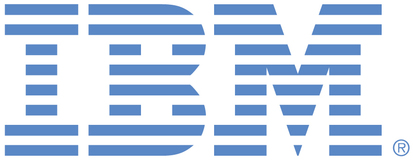
This is an IBM Automation portal for Cloud Management, Technology Cost Management, Network Automation and AIOps products. To view all of your ideas submitted to IBM, create and manage groups of Ideas, or create an idea explicitly set to be either visible by all (public) or visible only to you and IBM (private), use the IBM Unified Ideas Portal (https://ideas.ibm.com).
Shape the future of IBM!
We invite you to shape the future of IBM, including product roadmaps, by submitting ideas that matter to you the most. Here's how it works:
Search existing ideas
Start by searching and reviewing ideas and requests to enhance a product or service. Take a look at ideas others have posted, and add a comment, vote, or subscribe to updates on them if they matter to you. If you can't find what you are looking for,
Post your ideas
Post an idea.
Get feedback from the IBM team and other customers to refine your idea.
Follow the idea through the IBM Ideas process.
Specific links you will want to bookmark for future use
Welcome to the IBM Ideas Portal (https://www.ibm.com/ideas) - Use this site to find out additional information and details about the IBM Ideas process and statuses.
IBM Unified Ideas Portal (https://ideas.ibm.com) - Use this site to view all of your ideas, create new ideas for any IBM product, or search for ideas across all of IBM.
ideasibm@us.ibm.com - Use this email to suggest enhancements to the Ideas process or request help from IBM for submitting your Ideas.

Added additional data in the comments section.
Option 1: Using ConfigMap
You can use a ConfigMap to define and store the above properties under the DT_CUSTOM_PROP key, specifying values for each property.
Once created, the ConfigMap needs to be mapped to your container so it can read the DT_CUSTOM_PROP values.
Steps:
1. Add the properties to the ConfigMap under the key DT_CUSTOM_PROP
2. In your container definition, add an environment variable named DT_CUSTOM_PROP
3. Reference the ConfigMap and Dynatrace key to pull the values.
Important: The environment variable must be named DT_CUSTOM_PROP for Dynatrace to recognize and collect the metadata.
Example ConfigMap:
apiVersion: v1
kind: configMap
metadata:
name: dynatrace-props
namespace: default
data:
DT_CUSTOM_PROP: CONTAINER_AIT=123 CONTAINER_DATACENTER=USA CONTAINER_ENVIRONMENT=Dev CONTAINER_FUNCTION=WebApp CONTAINER_K8_CLUSTER=useast1
Example Pod/Deployment YAML:
env:
- name:DT_CUSTOM_PROP
valueFrom:
configMapKeyRef:
name: dynatrace-props
key: DT_CUSTOM_PROP
Note: Ensure that DT_CUSTOM_PROP values contain no spaces (eg., use "WebApp" instead of "Web App") to avoid formatting issues.
Option 2: Hardcoding Values into Pod/Deployment
Alternatively, you can directly set the DT_CUSTOM_PROP environment variable in your Pod or Deployment file.
In this case, all metadata properties must be defined under a single environment variable named DT_CUSTOM_PROP.
Each key-value pair should be separated by a space to indicate a new metadata property.
Example:
apiVersion: v1
kind: Pod
metadata:
name: dynatrace-example
namespace: default
spec:
containers:
- name: dynatrace-example
image: dynatrace/example
env:
- name: DT_CUSTOM_PROP
value: CONTAINER_AIT=123 CONTAINER_DATACENTER=USA CONTAINER_ENVIRONMENT=Dev CONTAINER_FUNCTION=WebApp CONTAINER_K8_CLUSTER=useast1